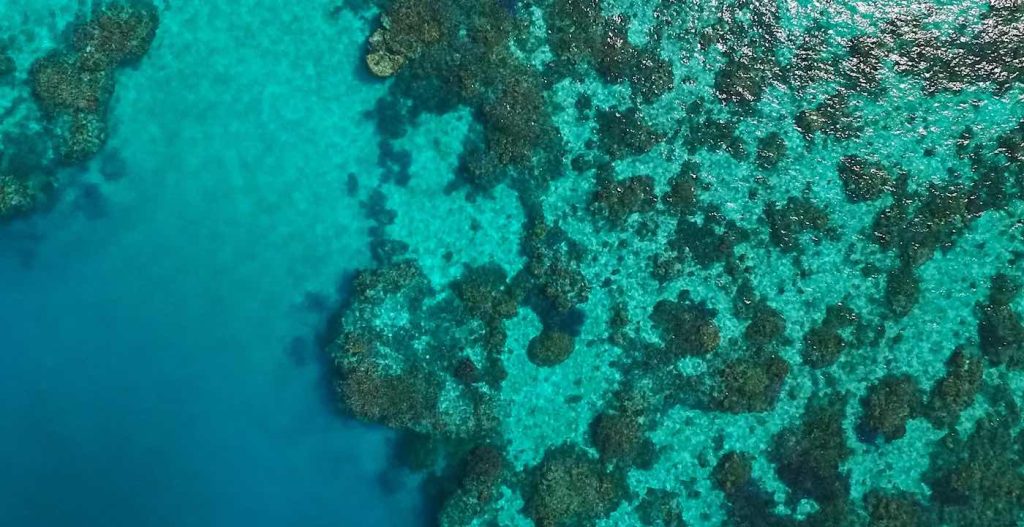By Good News Network
-Aug 4, 2022

Australian Institute of Marine Science 2022 Report
The northern and central Great Barrier Reef have recorded their highest amount of coral cover since the Australian Institute of Marine Science began monitoring 36 years ago.
Published today, the group’s Annual Summary Report on Coral Reef Condition for 2021/22 shows another year of increased coral cover across much of the Reef—with increases of 7-9 percent in several areas.
In the 87 representative reefs surveyed between August 2021 and May 2022 with a Long-Term Monitoring Program, average hard coral cover in the region north of Cooktown increased to 36% (from 27% in 2021) and to 33% in the central Great Barrier Reef (from 26% in 2021).
However, average coral cover in the southern region was down 4% in that same period.
AIMS CEO Dr. Paul Hardisty said the results in the north and central regions were a sign the Reef can recover, but warns about the increased frequency of coral bleaching events, which are a coral’s response to stressful conditions such as heat. A condition from which they still can survive.
LOOK: Spectacular Coral Event This Year Spawns Hope–And Billions of Babies For Great Barrier Reef
Dr. Hardisty said their understanding of how the ecosystem responds to bleaching is still developing.
“The 2020 and 2022 bleaching events, while extensive, didn’t reach the intensity of the 2016 and 2017 events and, as a result, we have seen less mortality,” he said in a release.
These latest results demonstrate the Reef can still recover in periods free of intense disturbances.
RELATED: Scientists ‘Elated’ After Finding Massive Coral Reef—The First Reef to Be Discovered in 120 Years
AIMS monitoring program team leader Dr Mike Emslie said the 2022 results built on the increases in coral cover reported for 2021, with most of the increase continuing to be driven by fast-growing Acropora corals.
A third of the gain in coral cover recorded the previous year in the south was lost last year due to ongoing crown-of-thorns starfish outbreaks, according to the report, which is the largest, longest, and most comprehensive information source on the health of the Great Barrier Reef.
CHECK OUT: Climate-Resilient Coral Reefs Able to Cope With 2ºC of Global Warming
The northern and central Great Barrier Reef have recorded their highest amount of coral cover since the Australian Institute of Marine Science began monitoring 36 years ago.
Published today, the group’s Annual Summary Report on Coral Reef Condition for 2021/22 shows another year of increased coral cover across much of the Reef—with increases of 7-9 percent in several areas.
In the 87 representative reefs surveyed between August 2021 and May 2022 with a Long-Term Monitoring Program, average hard coral cover in the region north of Cooktown increased to 36% (from 27% in 2021) and to 33% in the central Great Barrier Reef (from 26% in 2021).
However, average coral cover in the southern region was down 4% in that same period.
AIMS CEO Dr. Paul Hardisty said the results in the north and central regions were a sign the Reef can recover, but warns about the increased frequency of coral bleaching events, which are a coral’s response to stressful conditions such as heat. A condition from which they still can survive.
LOOK: Spectacular Coral Event This Year Spawns Hope–And Billions of Babies For Great Barrier Reef
Dr. Hardisty said their understanding of how the ecosystem responds to bleaching is still developing.
“The 2020 and 2022 bleaching events, while extensive, didn’t reach the intensity of the 2016 and 2017 events and, as a result, we have seen less mortality,” he said in a release.
These latest results demonstrate the Reef can still recover in periods free of intense disturbances.
RELATED: Scientists ‘Elated’ After Finding Massive Coral Reef—The First Reef to Be Discovered in 120 Years
AIMS monitoring program team leader Dr Mike Emslie said the 2022 results built on the increases in coral cover reported for 2021, with most of the increase continuing to be driven by fast-growing Acropora corals.
A third of the gain in coral cover recorded the previous year in the south was lost last year due to ongoing crown-of-thorns starfish outbreaks, according to the report, which is the largest, longest, and most comprehensive information source on the health of the Great Barrier Reef.
CHECK OUT: Climate-Resilient Coral Reefs Able to Cope With 2ºC of Global Warming
No comments:
Post a Comment